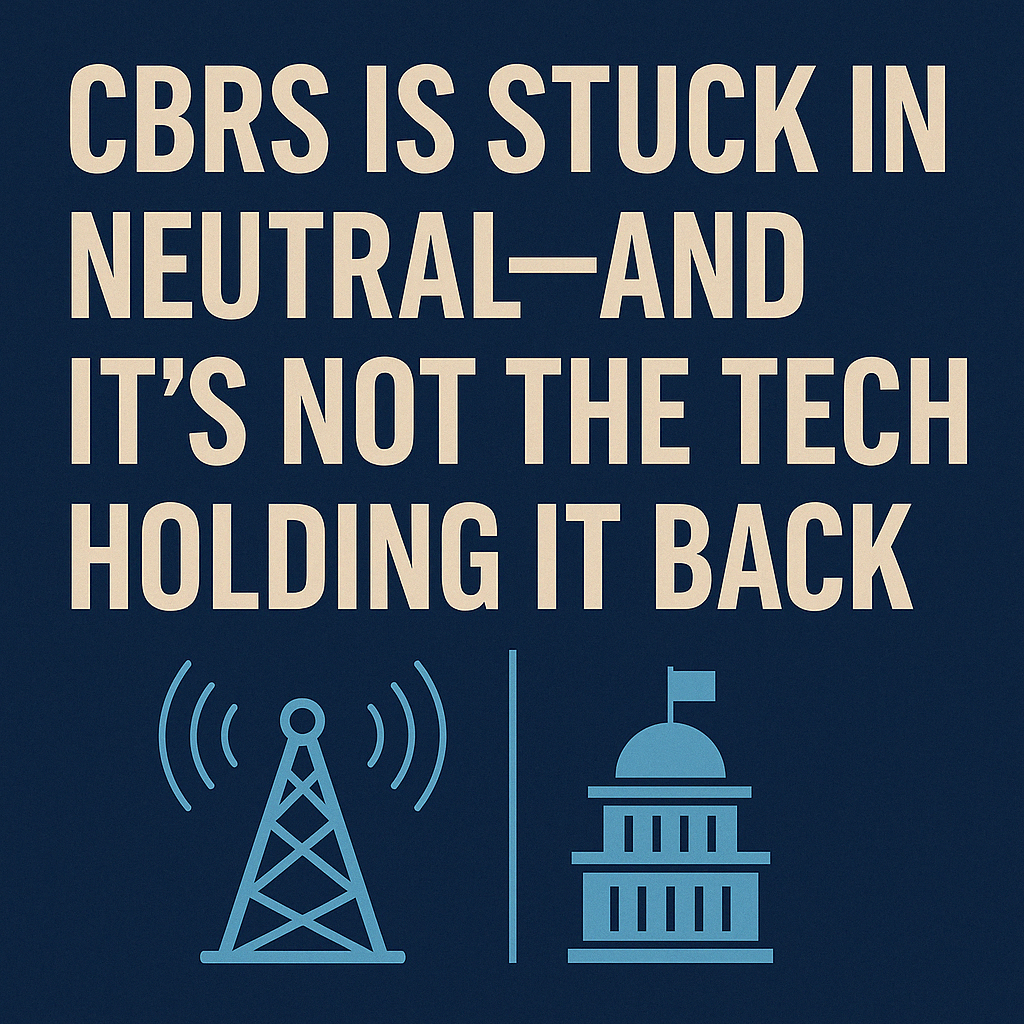CBRS: Stuck in Neutral
Why is there a regulatory stranglehold on CBRS expansion?

CBRS is Stuck in Neutral — and It's Not the Tech Holding It Back
The Citizens Broadband Radio Service (CBRS) was pitched as a revolutionary leap for wireless in the U.S. — a framework that would finally democratize spectrum access, drive local innovation, and support everything from smart cities to rural broadband to decentralized networks.
The promise? Provide new connectivity options for businesses, communities, and those without licensed spectrum, and empower new players to build connectivity where it's needed most.
The reality? A proven technology with shovel-ready potential being throttled by bureaucracy, legacy interests, and the same government inefficiency that’s plagued nearly every major telecom initiative in the past decade.
The Promise of CBRS
CBRS operates in the 3.5 GHz band — a “Goldilocks” frequency offering a strong mix of coverage and capacity. Its three-tiered access model was supposed to open the doors for small businesses, school districts, ISPs, and even decentralized wireless networks to stand up their own infrastructure without spending billions at FCC auctions.
It sounded like the beginning of a decentralized telecom renaissance:
Incumbent Access (Tier 1) – Mainly U.S. military and satellite systems
Priority Access Licenses (PALs) (Tier 2) – Auctioned licenses for limited interference protection
General Authorized Access (GAA) (Tier 3) – Unlicensed access, shared opportunistically
Instead of open access, though, we’ve gotten delays, complexity, and arbitrary shutdowns — all thanks to the poorly designed, fragile oversight system known as SAS.
The SAS Bottleneck
The Spectrum Access System (SAS) was intended to be the intelligent gatekeeper of CBRS. In practice, it functions more like a glitchy TSA agent with too much authority.
Want to deploy a radio in a town 100 miles from a coastline? If a Navy radar ship might pass within range sometime this month, your spectrum could get blocked without warning. This process — triggered by a network of Environmental Sensing Capability (ESC) sensors — creates massive Dynamic Protection Areas (DPAs), often hundreds of miles wide.
This kills commercial usability for vast swaths of land.
Deployers are expected to navigate this uncertain terrain while continuing to invest time, labor, and capital into CBRS — often for zero ROI.
BEAD Is Failing for Similar Reasons
The Broadband Equity, Access, and Deployment (BEAD) Program — a $42.5 billion federal initiative — was supposed to blanket the country with high-speed broadband. It's off to a sluggish, bureaucratic start that mirrors CBRS's stagnation.
As of today, almost none of that money has reached the people or communities it's meant to help.
Why? Because federal and state-level coordination is a mess. Approval cycles are more than slow. Rules are massively unclear. Requirements are extremely contradictory. And legacy providers are gaming the system while smaller, more innovative projects are locked out by the mounting red tape.
Sound familiar?
Just like CBRS, BEAD is being strangled by the very institutions that were supposed to empower a new generation of connectivity builders.
Watch Jon Stewart’s outrage and disbelief concerning BEAD as it is explained in detail by Ezra Klein on YouTube 📺
Who Loses? Everyone but the Status Quo
The impact of these bottlenecks is real:
Underserved communities remain offline
Enterprises delay or abandon CBRS deployments
Decentralized wireless projects shift away from CBRS entirely
ISPs are stuck in analysis paralysis
Legacy telecom giants maintain dominance
CBRS was supposed to challenge the old guard. Instead, it's been boxed in by outdated defense policies, centralized coordination failures, and a lack of political will to let spectrum be used where and when it’s most needed.
What Needs to Change
There’s still time to save CBRS — but not without serious reform.
Here’s what we think needs to happen:
Reform the SAS and ESC structure – Use smarter, real-time detection, not massive “maybe zones”
Update DPA logic – Most shutdowns happen in places where interference risk is theoretical, not real
Allow localized overrides – Let counties or cities certify no interference risk for fixed infrastructure
Pressure defense to modernize – National security matters, but not at the cost of national connectivity
Streamline regulatory review – Cut timelines from years to months and weeks
Final Thoughts
CBRS isn’t broken because of lack of demand or bad tech. It’s broken because the institutions managing it aren’t built to support modern, community-led infrastructure.
Just like BEAD, we risk turning one of the most promising tools in the telecom toolbox into a cautionary tale.
The next generation of connectivity — whether fiber, CBRS, 5G, or decentralized mesh — can’t run on 20th-century permission slips.
We don’t need more spectrum studies. We need access.
NOW.
